Content Creator Taxes: Your Guide to ITR Filing & Strategy
- THE MAG POST

- 2 days ago
- 8 min read

The final deadline for filing your Income Tax Returns (ITR) for the financial year 2024–25 is rapidly approaching on September 15, 2025, marking a critical juncture for financial accountability. In today's evolving professional landscape, where platforms like YouTube and various social media channels have blossomed into full-fledged careers, it's essential for content creators to possess a clear understanding of their tax obligations. This includes discerning the most appropriate ITR form for their specific income streams, which often derive from advertisements, brand promotions, affiliate marketing, and paid collaborations, all of which fall directly under the tax net and necessitate careful financial management.
Navigating the Tax Landscape for Digital Content Creators
The digital realm has transformed how individuals earn, with platforms like YouTube and social media evolving into legitimate and lucrative career paths. For content creators, understanding the nuances of income tax filing is not merely a compliance obligation but a fundamental aspect of establishing financial credibility. As the deadline for filing Income Tax Returns (ITR) for the financial year 2024–25 approaches, it's imperative for these digital entrepreneurs to grasp how their earnings are taxed and which ITR form best suits their unique financial profiles.
Classifying Digital Earnings for Tax Purposes
Income generated through advertisements, brand endorsements, affiliate marketing, paid collaborations, and consulting services rendered via video content directly falls under the purview of taxation. The Income Tax Act of India categorizes such earnings based on their primary source. If your YouTube or social media endeavors constitute your principal means of livelihood, the income derived is treated as business income. Conversely, if these digital earnings supplement a primary salary or other established income streams, they are classified under ‘income from other sources’.
The Business Income Designation
When digital platforms serve as the primary engine of your professional life, the income earned is formally recognized as business income. This classification carries significant implications for tax reporting and potential deductions. It signifies that the platform is not just a side hustle but the core of your economic activity, requiring a more comprehensive approach to tax preparation. This distinction is crucial for accurately reporting your financial standing to the tax authorities, ensuring compliance while also leveraging available tax benefits.
'Income From Other Sources' Explained
In instances where earnings from digital content creation are secondary to a main source of income, such as a full-time job, the revenue is typically reported under the 'income from other sources' head. This category often applies to creators who monetize their platforms as a supplementary revenue stream. While it might seem simpler, it's essential to accurately declare all such income, as it contributes to your total taxable income and can influence your overall tax bracket. Proper documentation remains vital, irrespective of the income classification.
Understanding India's Slab-Based Taxation System
India employs a progressive, slab-based taxation system, meaning the tax rate escalates in tandem with your income level. Your total tax liability is meticulously calculated by aggregating all income streams—whether from traditional employment, business ventures, or digital platforms. This holistic approach ensures that individuals are taxed fairly based on their overall financial capacity. For content creators, this underscores the importance of consolidating all income sources for accurate tax assessment.
The Progressive Nature of Income Tax
The core principle of India's income tax structure is its progressive nature. As your income increases, you move into higher tax brackets, with correspondingly higher tax rates applied to the portion of your income within those brackets. This system aims to distribute the tax burden more equitably, with those earning more contributing a larger proportion of their income to public revenue. Understanding these slabs is fundamental for estimating your tax liability accurately and planning your finances accordingly.
Aggregating Diverse Income Streams
A critical aspect of tax filing for content creators involves the aggregation of all income sources. This means that income from salaries, business profits, freelance work, investments, and digital platforms must all be combined to determine your total taxable income. This consolidated figure is then used to calculate your final tax obligation, ensuring a comprehensive assessment of your financial standing. Diligent record-keeping across all these streams is therefore non-negotiable.
Choosing the Right ITR Form: A Crucial Decision
Selecting the appropriate ITR form is paramount for accurate tax filing, especially for content creators whose income streams can be diverse. The wrong form can lead to rectifications or penalties. The Income Tax Department offers several ITR forms, each tailored to specific income profiles. For individuals earning through digital platforms, typically involving business or professional income, the choice often narrows down to ITR-3 or ITR-4, requiring careful consideration of their specific earnings and expenditure patterns.
ITR-1 and ITR-2: Limited Applicability
Forms ITR-1 and ITR-2 are generally not suitable for most content creators. ITR-1 is designed for individuals whose sole income source is salary, pension, or interest from a house property. ITR-2 caters to those with salary income and capital gains, but it does not accommodate business or professional income. Therefore, creators relying on advertising, sponsorships, or affiliate marketing typically need to look beyond these simpler forms to comply with tax regulations.
ITR-3: For Business and Professional Income
The ITR-3 form is specifically designed for individuals and Hindu Undivided Families (HUFs) who have income from profits and gains of business or profession. This form is highly relevant for YouTubers and social media influencers who operate their content creation as a business. It allows for the reporting of business income, capital gains, income from house property, and income from other sources, making it a comprehensive choice for digitally-savvy professionals with diverse financial activities.
ITR-4: Presumptive Taxation Simplified
For smaller businesses and professionals, the ITR-4 (Sugam) form offers a simplified way to declare income under the presumptive taxation scheme. This scheme allows eligible individuals to compute their income based on a percentage of their turnover or gross receipts, rather than maintaining detailed books of accounts. While convenient, creators must ensure they meet the eligibility criteria for presumptive taxation, which typically involves certain turnover limits, to utilize this form effectively.
The Imperative of Meticulous Record-Keeping
Transparency and accuracy in tax filing hinge on meticulous record-keeping. Content creators must maintain detailed ledgers of all revenue streams—encompassing ad revenue, payments from sponsored content, affiliate marketing commissions, Super Chat earnings, and membership subscriptions. Equally vital is the diligent tracking of all associated expenses. These can include investments in essential equipment like cameras and lighting, ongoing internet subscriptions, software licenses, and editing costs. Properly documented expenses can be claimed as deductions, significantly reducing the overall taxable income.
Documenting All Revenue Streams
Every rupee earned must be accounted for. For content creators, this means maintaining organized records of income from all sources. This includes detailed statements from advertising networks, invoices for brand collaborations, reports from affiliate marketing programs, and transaction histories for Super Chat or channel memberships. Accurate documentation ensures that all income is reported, preventing potential discrepancies with tax authorities and facilitating a smooth filing process.
Tracking Deductible Expenses
The flip side of revenue documentation is the equally critical task of tracking expenses. Any expenditure incurred wholly and exclusively for the purpose of earning income as a content creator is generally deductible. This can range from the initial purchase of professional-grade cameras, microphones, and lighting setups to ongoing costs like high-speed internet, editing software subscriptions, studio rent, and even travel expenses for content-related activities. Amassing receipts and invoices for these items is crucial for claiming these deductions effectively.
Choosing Between Tax Regimes: Old vs. New
India provides taxpayers with a choice between two distinct tax regimes: the Old Regime and the New Regime. The Old Regime allows individuals to avail various exemptions and deductions, such as those under Section 80C for investments, 80D for health insurance, and HRA for rent. The New Regime offers lower tax rates but significantly curtails the availability of most deductions and exemptions. Content creators, particularly those filing under ITR-3 or ITR-4, must carefully analyze their income, expenditure, and investment patterns to determine which regime offers the most tax advantage. Once a regime is chosen, it generally cannot be switched frequently without specific conditions being met.
Evaluating the Old Tax Regime
The traditional Old Tax Regime appeals to those who can strategically utilize a wide array of deductions and exemptions. By making specific investments, purchasing health insurance, or incurring eligible expenses like home loan interest or rent, individuals can significantly reduce their taxable income. For content creators who have substantial eligible expenses or make regular investments, the Old Regime might offer a greater tax saving, despite its potentially higher tax rates on certain income slabs.
Assessing the New Tax Regime
The New Tax Regime, introduced to simplify tax compliance and potentially boost economic activity, presents lower income tax rates across most slabs. However, this comes at the cost of forfeiting most common deductions and exemptions. Creators who have minimal eligible deductions or prefer a simpler tax filing process might find the New Regime more appealing. A thorough calculation comparing the tax liability under both regimes, considering all potential deductions, is essential for making an informed decision.
Reporting Capital Gains and Other Investments
Many content creators diversify their income streams by investing in assets like stocks, mutual funds, or real estate. Profits generated from the sale of these assets constitute capital gains and must be reported accurately in the ITR. The tax treatment of capital gains varies depending on the asset type and the holding period (short-term vs. long-term). It is crucial to understand these distinctions and report them correctly to avoid penalties. Additionally, profits from the appreciation of assets such as precious metals (gold, silver) or valuable art pieces also fall under taxable income and require disclosure.
Understanding Capital Gains Taxation
Capital gains arise when you sell an asset for more than its purchase price. In India, these gains are taxed differently based on whether they are short-term (typically held for less than a year or two, depending on the asset) or long-term. Short-term capital gains are usually taxed at your applicable income tax slab rates, while long-term capital gains often attract concessional tax rates, sometimes with indexation benefits to account for inflation. Accurately calculating and reporting these gains is vital for tax compliance.
Disclosure of Other Investment Income
Beyond traditional capital assets, income derived from other investments also needs to be declared. This can include interest earned from fixed deposits, dividends from stocks, rental income from properties, or profits from trading in commodities like gold and silver. Even the appreciation in value of collectibles like art or antiques can be subject to tax upon sale. Ensuring all such income is reported in the appropriate sections of the ITR is part of a comprehensive and honest tax declaration.
Final Word: Proactive Tax Management for Creators
The journey of a content creator is increasingly intertwined with financial management, and proactive tax planning is a cornerstone of sustainable success. By understanding income classification, selecting the correct ITR form, diligently maintaining records of income and expenses, and making informed choices between tax regimes, creators can navigate the complexities of taxation with confidence. Embracing transparency and accuracy not only ensures legal compliance but also builds a robust financial foundation for continued growth in the dynamic digital landscape.
Aspect | Details for Content Creators |
ITR Filing Deadline (FY 2024-25) | September 15, 2025 |
Primary Income Classification | Business Income (if main livelihood) or Income from Other Sources (if supplementary) |
Applicable ITR Forms | ITR-3 (for business/professional income) or ITR-4 (for presumptive taxation) are most common. |
Key Filing Requirements | Meticulous record-keeping of all revenue streams and deductible expenses (equipment, internet, software). |
Tax Regimes | Choice between Old Regime (with deductions) and New Regime (lower rates, fewer deductions). Requires careful evaluation. |
Additional Reporting | Capital gains from investments (stocks, mutual funds, real estate) and profits from assets like gold or art must be disclosed. |
Importance of Accuracy | Ensures compliance, avoids penalties, and builds a strong financial identity. |
From our network :
Centering Flex Container Items with Scrolling: A CSS Solution
Wipro Lawsuit Over Non-Compete and Confidentiality: Former SVP’s Legal Battle
OpenAI o3 AI System: Outperforming Industry Leaders in Reasoning and Programming
JWST Discovers Hundreds of Tiny Asteroids in the Main Belt: A New Era of Planetary Defense?

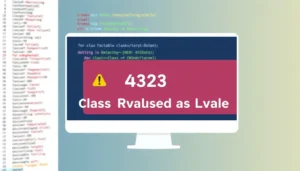
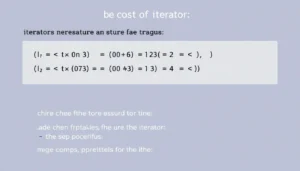
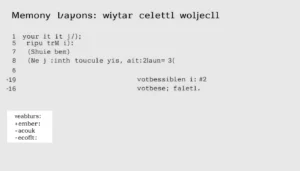
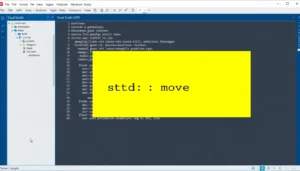

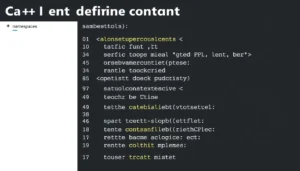

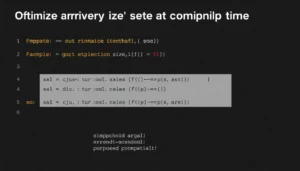













































Comments